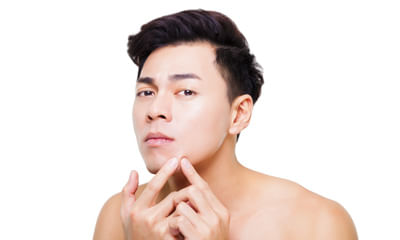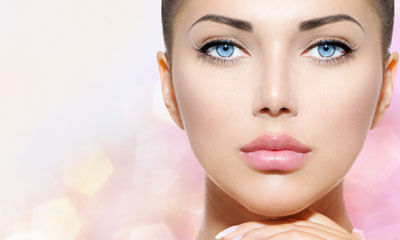How To Get Rid Of Brown Spots On Inner Thighs
Hii. I have a burnt scare on my thigh from past so many years .on my dark scare I have all dark brown spots .it looks li ...
Ask Free Question
Massaging the burn scar is another technique used to assist in softening the scar and releasing any adhesions which may be present in the scar bands. Massaging can begin when the burn or skin graft is durable enough to tolerate pressure and friction. Let's have a detailed discussion for better advice and medication plan.
Getting small brown spots like dots some what patches, rashes due to water or food dnt know why on my hands and shoulder ...
Ask Free Question
Itchy skin, also known as pruritus, is an irritating and uncontrollable sensation that makes you want to scratch to relieve the feeling. The possible causes for itchiness include internal illnesses and skin conditions. Usually rash on elbows and knees are linked to skin related condition known as atopic dermatitis. The medical term for atopic dermatitis is eczema. This a chronic skin condition that makes the elbow skin to appear red, itchy, dry, scaly or cracked. Itchy bumps on elbows can also be treated by use of both natural remedies and home care techniques. Most of these remedies help to get rid of itching and inflammation. These home remedies include avoid scratching, bleach bath etc. For further detailed discussion we can connect over a call or a vide conferencing as per your convenience.
Suffering with ringworm near public area and buttocks since 6 months, can you help me pls. ...
Ask Free Question
Introduction: ringworm is a fungal infections that are on the skin. Some of these fungal infections produce round spots on the skin, but many do not. The medical term for ringworm is tinea. Dermatophytes are the fungi cause bjuiusing ringworm hence also known as dermatophytosis. It appears in various forms of cutaneous infection. The names are given according to the site affected. The degree of inflammation depends on the causative fungus and host immunity. It may transmit from soil, animal or from human to human. causes /etiology: ringworm is a contagious fungal infection caused by mold-like parasites that live on the cells in the outer layer of your skin. It can be spread in the following ways: human to human: ringworm often spreads by direct, skin-to-skin contact with an infected person. animal to human: you can contract ringworm by touching an animal with ringworm. Ringworm can spread while petting or grooming dogs or cats. It's also fairly common in cows. object to human: ringworm can spread by contact with objects or surfaces that an infected person or animal has recently touched or rubbed against, such as clothing, towels, bedding and linens, combs, and brushes. soil to human: in rare cases, ringworm can be spread to humans by contact with infected soil. Infection would most likely occur only from prolonged contact with highly infected soil. risk factors: you're at higher risk of ringworm of the body if you: live in a warm climate have close contact with an infected person or animal share clothing, bedding or towels with someone who has a fungal infection participate in sports that feature skin-to-skin contact, such as wrestling wear tight or restrictive clothing have a weakened immune system. ð complications: a fungal infection rarely spreads below the surface of the skin to cause serious illness. But people with weak immune systems, such as those with hiv/aids, may find it difficult to get rid of the infection. types: tinea barbae: ringworm of the bearded area of the face and neck, with swelling and marked crusting, often with itching, sometimes causes the hair to break off. "barber's itch" tinea capitis: ringworm of the scalp commonly affects children, mostly in late childhood or adolescence. This condition may spread in schools. Tinea capitis appears as scalp scaling that is associated with bald spots. tinea corporis: ringworm the skin of the body, it often produces the round spots of classic ringworm. Sometimes, these spots have an "active" outer border as they slowly grow and advance. tinea cruris: ringworm of the groin or "jock itch" tends to have a reddish-brown color and to extend from the folds of the groin down onto one or both thighs. tinea faciei: ringworm on the face except in the area of the beard. On the face, ringworm is rarely ring-shaped. Causes red, scaly patches with indistinct edges. tinea manus: ringworm involving the hands, particularly the palms and the spaces between the fingers. Causes thickening (hyperkeratosis) of these areas, often on only one hand. tinea pedis: ringworm called "athlete's foot" may cause scaling and inflammation in the toe webs, especially the one between the fourth and fifth toes. Thickening or scaling of the skin on the heels and soles. Causes blisters between the toes or on the sole. Extremely common skin disorder. It is the most common and perhaps the most persistent of the fungal (tinea) infections. It is rare before adolescence. Can occur in association with other fungal skin infections such as tinea cruris tinea unguium: ringworm of the fingernails and, more often, the toenails yellow, thick, and crumbly. This is referred to as fungal nails or onychomycosis symptoms: â»reddish, scaly or white patches on the skin. â»the lesions may appear raised and blistered. the circular lesion might have a clearing in the center. hair loss is common side effect of this disease. ringworm of scalp especially is characterized by patchy hair loss where the hair might be bent and broken at an odd angle. homeopathic remedies by location of the ringworm: tinea in general body arsenicum album bacillinum chrysar. Natrum mur phytolacca sepia tellurium thuja tuberculinum tinea barbae (beard) bacillinum calc carb cicuta graphites kali bich nitric acid platina staphysagria sulphur thuja tinea capitis (head) calc carb dulcamara phyto sepia mezerum psorinum tellurium tinea on face graphites natrum carb natrum mur sepia tellurium thuja tuberculinum tinea versicolor natrum ars. Sepia thuja so it's better to consult a doctor and take proper treatment.
My face and around vagina or thighs very dark black or brown spots h Please best treatment bataye. ...
Ask Free Question
Dear lybrate-user let me know first if the black spots are due to any wax. Call back for online chat so that I may prescribe you the best treatment to get rid of this problem.
I'm sick of pimples on my forehead. They are continuously giving me visit again and again. Its really frustrating.(My fo ...
Ask Free Question
Avoid olliy food avoid exposure to dust also take care of your scalp n hair n for HOMOEOPATHIC medicines consult me on line for dandruff n acne.
I am married since 3 year. I got red spot at my both thigh approx 7 month. Which look white in starting and now it becam ...
Ask Free Question
Local application of coconut oil or mustard oil or some soothing and calming lotion may provide relief in itching. Neem is one among the best blood purifier and detoxifier known to ayurveda. It enhances immune system and neem oil is an antiseptic in itself. Leaf extracts are used in antiseptics and can be effectively used in treating skin diseases. It destroys fungus and bacteria and is best for almost all kinds of skin diseases including redness of skin and itching.
Skin of neck and underarm having rashes and dark brown, black colour what should I do pl suggest treatment. ...
Ask Free Question
It is very essential to cleanse and exfoliate underarm nd inner thigh area skin every day just as we do with our faces. When we neglect other parts while pampering face, this results in patchy dark skin. So follow this daily care routine for getting rid of dark folded areas. • Take milk and rub your dark area with it. Milk is an excellent cleanser and a toner too. • After cleansing, use a scrub, preferably APRICOT SCRUB ( BAKSON), to exfoliate the skin around your dark areas. • You may mix olive oil with sugar and rub gently to scrub your dark areas • Sometimes use another scrub having bleaching agent such as lemon juice. You will find many scrubs here in this article that you can use for daily exfoliation. • After exfoliating, wash off with water and apply some moisturizer. • Never step out in sun when you apply lemon juice on your skin. This will make your dark areas darker than before. If you follow the above skin care regime daily, you will begin seeing result in a two week’s time. However, do not stop and continue cleansing, scrubbing and moisturizing your skin. Home Remedy Oats is not only good for your overall health but also for your patchy dark spots. As we do not pay more attention towards cleaning our other areas while doing every thing for our face- from cleansing, scrubbing, moisturizing and what not – our skin folds gets dirty with the oil and fine grit deposits. This makes it look patchy and dark. Oats can be used as a scrub as well as a mask for dark areas when mixed with certain other skin lightening ingredients. Use oats as a scrub for dark areas You will need: • Oats – ground it coarsely, do not make fine powder out of it • Tomato pulp • Water • Moisturizer Directions: • Take the coarsely ground oats powder. • Mix tomato pulp to it to get a paste like consistency. • Apply this mixture to your entire folded region. • Leave it for about 15-20 minutes. • Now wet your fingers a littles and start rubbing your dark areas gently in circular motions. The coarse oats will have an exfoliating effect to remove dead skin cells from your dark areas. • After scrubbing dark areas with this natural oats scrub for about 5-7 minutes, wash off with water. • Apply some moisturizer on dark folded areas and massage gently. You may use this scrub twice or even thrice in a week depending upon the intensity of dark patchy folded skin . While oats will remove dirt and dead cells, tomato pulp will lighten the skin due to its natural bleaching properties. Homoeopathic medicine WHITENING CREAM ( BIOVALLEY ) Apply on dark patch folded areas twice daily Consult me after 30 days
I have dark patches in my inner thighs. I feel very low. I want to get rid of it. Please suggest me something. Yeah I am ...
Ask Free Question
1. Lemon Juice Lemon juice has bleaching properties that can help get rid of brown spots. Plus, it helps maintain soft, clear and beautiful skin. • Simply apply fresh lemon juice directly on the affected area. Leave it on for 30 minutes before rinsing it off with cold water. Repeat this remedy twice daily for about two months to notice positive results. If you have sensitive skin, dilute the lemon juice with water, rose water or honey. • Another option is to mix enough sugar in lemon juice to make a paste and use it as a scrub on your face, especially on your brown spots. Finally, rinse it off after 5 to 10 minutes. Do this a few times a week. You can also add some oilve oil in this recipe. 2. Buttermilk Buttermilk contains lactic acid that helps exfoliate the skin to remove blemishes and brown spots without drying out your skin. • Apply buttermilk on your brown spots using a cotton ball. Leave it on for a few minutes before washing the area with water. If you have oily skin or acne, you can also add some lemon juice to the buttermilk. • Another option is to mix four teaspoons of buttermilk and two teaspoons of tomato juice together and then apply this mixture on the affected skin. Repeat either of these remedies once or twice daily until you are satisfied with the results. 3. Castor Oil Castor oil has strong healing properties and can be used effectively to get rid of brown spots or age spots. Along with castor oil, you can use vitamin E oil, coconut oil, olive oil or almond oil to remove brown spots. 1. Use a cotton ball to apply castor oil on the affected area. 2. Gently massage the area for a few minutes. 3. Leave it on for a few hours and then wash it off. 4. Do this once in the morning and once at night to help the brown spots fade and make your skin tone even. 4. Apple Cider Vinegar Apple cider vinegar is an effective remedy for a number of skin problems including brown spots. It will help dry out and fade the spots faster. • Dilute some apple cider vinegar with an equal amount of water. You can also add some honey. Apply this solution on your brown spots and wash it off after a few minutes. Do this once daily for a few days or until you get positive results. You can use straight apple cider vinegar too, but it may sting. • Alternatively, mix one-half teaspoon of apple cider vinegar in a few tablespoons of orange juice. Apply it on the affected area and leave it on until it dries completely before washing it off. Repeat once or twice daily for four to five weeks. But the main reason in your case is overweight and due to friction of skin of thighs,these dark patches appear.So start reducing your weight to get rid of these dark patches.






